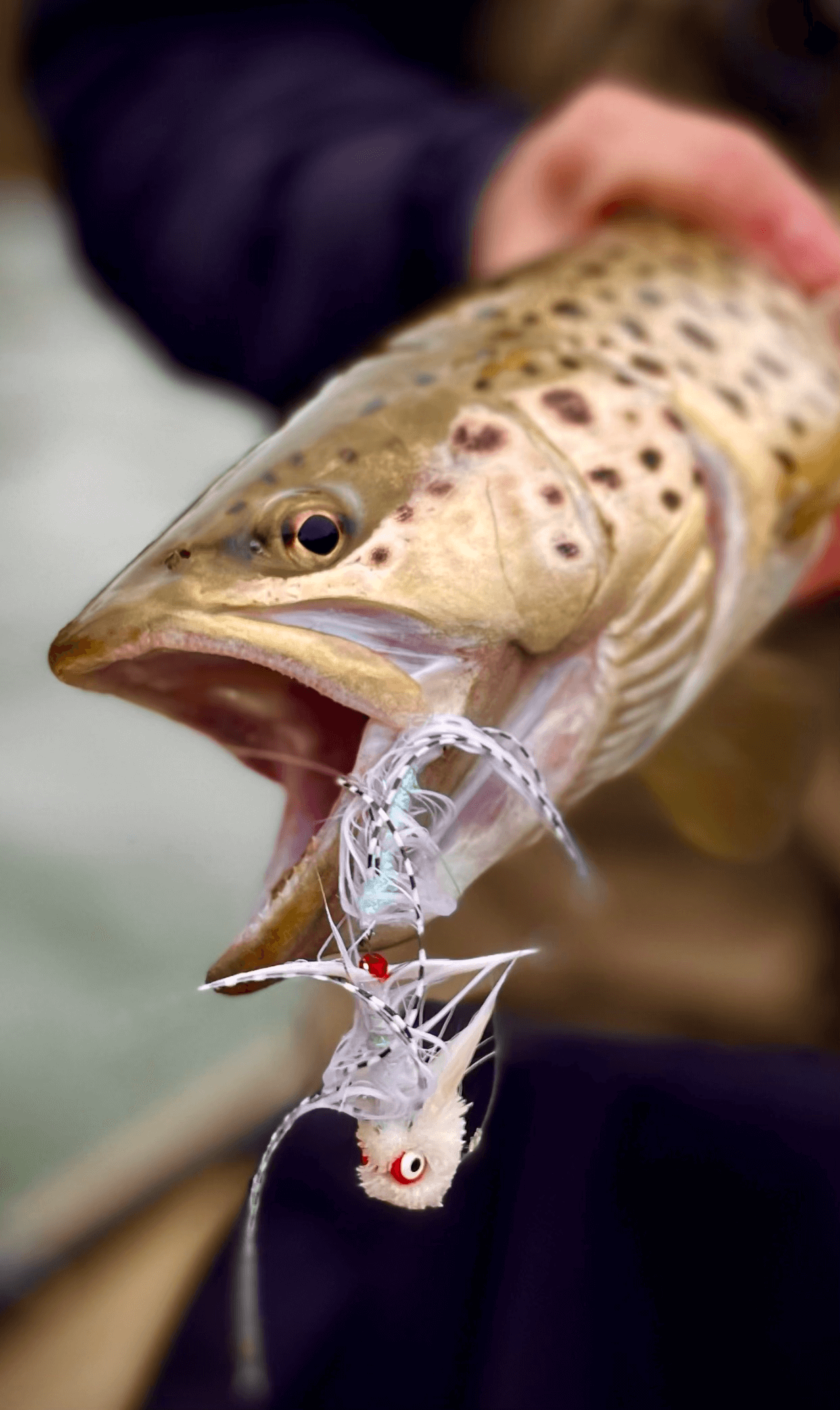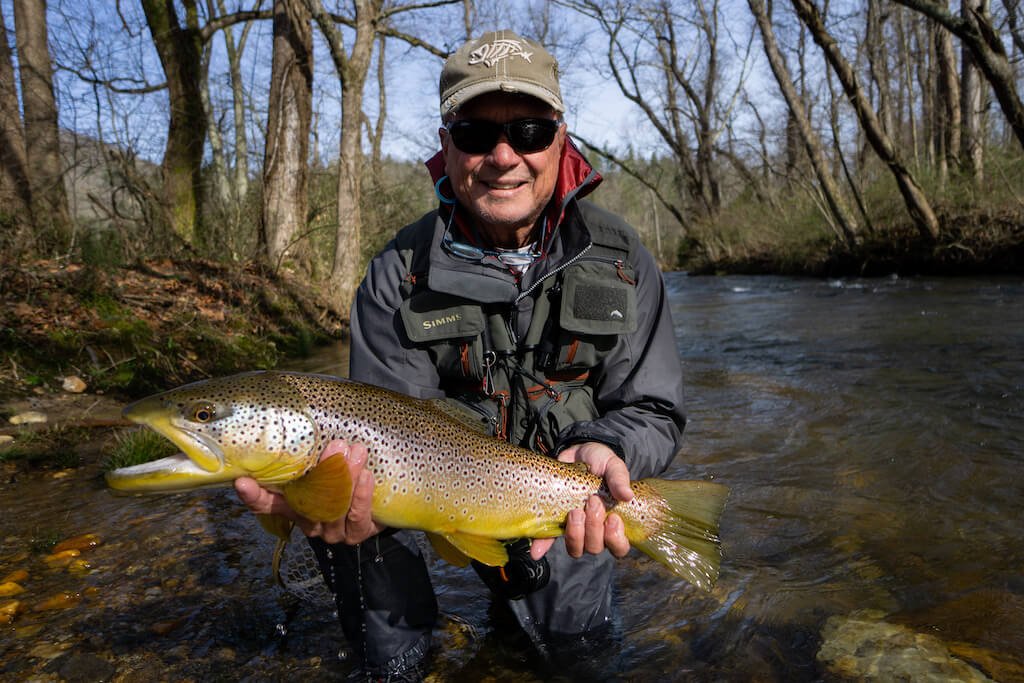Where To Find The Best Trout Fishing in Georgia
Insights From a Fly Fishing Guide
Trout fishing in Georgia offers anglers the chance to experience some of the best freshwater fishing in the United States. From mountain streams to large tailwaters, the state is home to a variety of excellent trout fishing areas. In this article, we'll take a look at the top trout fishing spots in Georgia from a fishing guide's perspective. We'll cover the best places to fish, the best flies to use, and offer some insight as to the best times to go to increase your chances of landing those big brown or rainbow trout.
The Toccoa River
Located in the North Georgia mountains in Fannin County, the Toccoa River is a prime trout stream for fly fishing. The river is home to a healthy population of rainbow, brown, and brook trout, and is stocked regularly by the Georgia Department of Natural Resources. In addition to its excellent fishing, the Toccoa River is surrounded by beautiful scenery and offers plenty of opportunities for other outdoor activities, such as hiking and camping. Some of its tributaries include: Cooper Creek, Rock Creek, Noontootla Creek, Suches Creek and Canada Creek. These waters also offer some amazing fishing opportunities away from the crowds.
Where To Fish
The Toccoa River is a beautiful mountain stream that winds its way through the north Georgia mountains. Here are a few geographical locations on the Toccoa that are particularly good for fly fishing:
Headwaters: The headwaters of the Toccoa River are located in the Blue Ridge Mountains, near the border with North Carolina. These upper reaches of the river offer excellent fly fishing for rainbow, brown, and brook trout.
Middle section: The middle section of the Toccoa River flows through the Chattahoochee National Forest and offers a variety of excellent fly fishing spots. This section of the river is known for its large, wild brown trout.
Lower section: The lower section of the Toccoa River flows through the town of Blue Ridge, right near the Blue Ridge dam, and into Lake Blue Ridge where it intersects with Tennessee. This section of the river offers good fly fishing for rainbow and brown trout, and is also stocked regularly by the Georgia Department of Natural Resources.
Each of these locations on the Toccoa River offers its own unique fishing opportunities and challenges. The headwaters offer small, clear streams with technical fly fishing, while the middle and lower sections offer larger, wild trout and more diverse fishing opportunities.
What Flies to Use
The best flies to use on the Toccoa River will depend on various factors, including the time of year, the type of trout you're targeting, and the current water conditions. Depending on the time and trout species, the size of the fly will vary. Here are a few popular flies that work well on the Toccoa River:
Dry flies: Dry flies are flies that imitate adult insects and float on the surface of the water. They are typically fished to imitate adult insects that are hatching or resting on the surface of the water. Good choices for dry flies on the Toccoa River include:
Adams dry flies (#14 to #22)
Elk hair caddis (#12 to #16)
Sulfurs (#14 to #18)
BWO's (#16 to #20)
Griffith's gnats (#16 to #22)
Nymphs: Nymphs are flies that mimic the aquatic insects that trout feed on and are usually fished below the surface. These are effective for catching both rainbow and brown trout:
Pheasant tail nymphs (#12 to #20)
Hares ear nymphs (#14 to #22)
Prince nymphs (#16 to #18)
Streamers: Streamers are larger flies that imitate small fish or other prey that trout may feed on. They are often fished with a fast strip retrieve and are effective for catching larger brown trout:
Wooly buggers (#2 to #6)
Sculpin patterns (#2 to #6)
Minnow imitations (#2 to #6)
Having a variety of flies in your box when fishing the Toccoa River is always a good idea. Different flies can be effective at different times of the year and under different conditions, so experimenting with different flies and techniques can help you find what the trout are biting on.
When To Go
The best time of year to fish on the Toccoa River will depend on many different factors, including the type of trout you are targeting, the weather conditions, and the water levels. Here are a few tips on when to fish on the Toccoa River:
Spring: The spring is a good time to fish on the Toccoa River, as the water is typically clear and the trout are starting to become more active. Look for hatches of aquatic insects, as the trout will often feed heavily on these during this time of year.
Summer: The summer can be a good time to fish on the Toccoa River, as long as the water levels are not too low. The summer heat can make the trout less active, so it is important to fish early in the morning or late in the evening when the water is cooler.
Fall: The fall is a particularly good time to fish on the Toccoa River, as the water is cooler and the trout are more active since it's spawning season. The fall hatches in Georgia present a huge opportunity for some big fish on the trout streams here.
Winter: The winter can be a good time to fish on the Toccoa River, as the water is cooler and the trout are more active. The winter can also be a good time to target larger brown trout, as they tend to be more active in the colder water.
If you’re looking for some help on figuring this river out, our Toccoa River fly fishing guides are sure to show you a good time when you book a trip with us!
The Chattahoochee River
The Chattahoochee River is one of Georgia's best fishing spots for a variety of reasons. Located in the north Georgia mountains and flowing southward through the state, the Chattahoochee offers a diverse range of fishing opportunities for anglers of all skill levels. The river is home to a variety of fish species, including rainbow and brown trout, bass, panfish, and catfish, and is known for its clear, cold water and abundant insect life. Whether you are an experienced fly angler or a beginner, the Chattahoochee River has something to offer for everyone. In addition to the excellent fishing, the Chattahoochee River is also surrounded by beautiful scenery, making it a perfect destination for a day trip or a longer fishing trip.
Where to fish:
Helen, GA: Located in the north Georgia mountains, Helen is home to a stretch of the Chattahoochee River that is known for its clear, cold water and abundant insect life. The Helen area is home to a variety of trout species, including rainbow, brown, and brook trout. Check out our recent guide about Trout Fishing in Helen GA to see a more in depth article about this amazing little town!
Buford Dam Tailwater: Located north of Atlanta, the Buford Dam Tailwater is a popular destination for trout fishing in the Chattahoochee River. The tailwater is home to a healthy population of rainbow and brown trout, and is known for its consistent hatches of aquatic insects.
Sope Creek: Located in the city of Marietta, Sope Creek is a small tributary of the Chattahoochee River that is home to a healthy population of rainbow and brown trout as well. The creek is easily accessible from the Sope Creek Trail, which follows the creek through the beautiful Chattahoochee River National Recreation Area.
What flies to Use:
Dry Flies:
The Parachute Adams and Elk Hair Caddis are both good choices for imitating adult mayflies and caddisflies, respectively. These flies can be effective in sizes #12 to #22 and #8 to #16, respectively, and are particularly effective when fished during hatches of these insects.
The Yellows Stimulator is a good choice for imitating adult grasshoppers and other large terrestrial insects, and can be effective in sizes #8 to #14.
The Chernobyl Ant is a good choice for imitating large, floating ants, and can be effective in sizes #8 to #12.
The Griffith's Gnat is a good choice for imitating small midges and other tiny insects, and can be effective in sizes #16 to #24.
Nymphs:
The Pheasant Tail and BH Hare's Ear are both good choices for imitating mayfly nymphs and can be effective in sizes #12 to #20.
The Rainbow Warrior is a good choice for imitating rainbow trout and can be effective in sizes #14 to #22.
The Pat's Rubber Legs is a good choice for imitating large stonefly nymphs and can be effective in sizes #4 to #12.
The Brassie is a small nymph fly that is effective for imitating a variety of aquatic insects, and can be effective in sizes #20 to #26.
The Zebra Midge is a good choice for imitating midge larvae and can be effective in sizes #16 to #22.
The WD40 is a good choice for imitating small mayflies and can be effective in sizes #16 to #20.
The Y2K Egg is a good choice for imitating eggs and can be effective in sizes #12 to #16.
Streamers:
The BH Wooly Bugger is a versatile streamer fly that can be effective for catching a variety of species, including trout, bass, and panfish. The Wooly Bugger can be fished in sizes #2 to #6, and is particularly effective when fished in deeper pools and runs.
The Sculpzilla is a large streamer fly that is designed to imitate sculpin and other small fish, and can be effective for catching larger predatory trout. The Sculpzilla is typically fished in size #4 and is best fished in deeper pools and runs.
The ole faithful Mini Dungeon, developed by Kelly Galloup, is a great streamer to land those big, aggressive browns as well. Size #4 - #6 seems to be a healthy spot to shoot from.
Both the BH Wooly Bugger, Sculpzilla and Mini Dungeon can be fished with a variety of retrieves, including a slow strip, a steady retrieve, or a quick, jerky retrieve. These flies can be particularly effective when the water is slightly off-color or when there is a low light condition.
When to go
The Chattahoochee River is a great destination for fly fishing throughout the year, with each season offering its own unique opportunities. Winter is an especially good time to fish the river, as the consistent water releases from the dam keep the trout active and feeding. Spring is also a great time to fish the upper sections of the river, where the hatches of aquatic insects can be prolific and the trout are hungry.
During the summer months, you can have success fishing with ants, beetles, and other terrestrial flies, especially in the cooler areas of the river. Fall is another excellent time to fish the Chattahoochee, as the caddis and BWO hatches can provide good opportunities for fly fishing. No matter what time of year you visit, the Chattahoochee River has something to offer for fly anglers of all skill levels.
Noontootla Creek
Noontootla Creek is a beautiful mountain stream located northwest of Dahlonega and offers some of the best trout fishing in Georgia. This place is known for its clear, cold water and abundant insect life, which attracts a healthy population of rainbow, brown, and brook trout. The fly fishing experience on Noontootla Creek is characterized by its small, clear streams and technical fly fishing. The creek is best fished with a small, stealthy approach, using light tippets and small flies. Nymphs, dry flies, and streamers can all be effective for catching trout on Noontootla Creek, and good presentation and accurate casting are key to success. Overall, Noontootla Creek is a beautiful and challenging destination for fly fishing in Georgia, and offers a unique and rewarding experience for anglers of all skill levels. This is a catch and release stream only, with the exception of being able to keep 1 fish over 16". Most anglers we know are practicing catch and release already and this will add to the longevity of this creek for years to come!
Where to Fish:
Buckeye Creek Road- At the Buckeye Creek Road access point, you will find a small parking area and a short trail that leads down to the creek. The trail is relatively easy to follow and is suitable for anglers of all skill levels. Once you reach the creek, you will find a variety of excellent fly fishing spots, including deep pools, runs, and riffles.
Lovingood Trail Access: This is a public trail access that has a forest service road that you can park on.
There are a few other bridge access points that look like public access, but are really private property. So don't go parking in places that you aren't certain are private or public land use. It's always better to be safe than sorry.
What Flies to Use:
Dry Flies:
The Yellow Sally, Yellow Humpy, and Light Cahill are all good choices for imitating small yellow stoneflies, which can be important food sources for trout in many streams. These flies can be effective in sizes #12 to #18, and are particularly effective when fished during stonefly hatches.
The Parachute Sulphur and Parachute Adams are both good choices for imitating mayflies, and can be effective in sizes #14 to #22.
The Elk Hair Caddis is a good choice for imitating adult caddisflies, and can be effective in sizes #8 to #16.
The Yellows Stimulator is a good choice for imitating adult grasshoppers and other large terrestrial insects, and can be effective in sizes #8 to #14.
The Chernobyl Ant is a good choice for imitating large, floating ants, and can be effective in sizes #8 to #12.
The Griffith's Gnat is a good choice for imitating small midges and other tiny insects, and can be effective in sizes #16 to #24.
Nymphs:
The Pheasant Tail and BH Hare's Ear are both good choices for imitating mayfly nymphs and can be effective in sizes #12 to #20.
The Rainbow Warrior is a good choice for imitating rainbow trout and can be effective in sizes #14 to #22.
The Pat's Rubber Legs is a good choice for imitating large stonefly nymphs and can be effective in sizes #4 to #12.
The Golden Stonefly is a good choice for imitating adult stoneflies and can be effective in sizes #6 to #10.
The Tellico Nymph is a good choice for imitating mayfly nymphs and can be effective in sizes #12 to #18.
The Zebra Midge is a good choice for imitating midge larvae and can be effective in sizes #16 to #22.
The WD40 is a good choice for imitating small mayflies and can be effective in sizes #16 to #20.
The Y2K Egg is a good choice for imitating eggs and can be effective in sizes #12 to #16.
Streamers: Much like the Hooch, the Wooly Bugger and Sculpzilla are our go to flies here.
When to Go:
Spring is an excellent time for fly fishing on Noontootla Creek due to the abundance of aquatic insects that keep the trout active and feeding. The summer can also be a good time to fish, particularly in the higher elevations, although there may be times when the water is too warm for the trout to be active. The fall is a particularly good time to fish on Noontootla Creek, as the cooler weather and the brown trout spawning season make for excellent fishing conditions. Winter can also be a good time to fish, although you will need to stick to the warmer days to have the best chances of success. Time of day is not a particularly important factor on Noontootla Creek, as the creek is not heavily fished and the trout are not as pressured as they are in more popular creeks.
To sum it all up, Georgia offers a variety of excellent trout fishing spots, each with its own unique characteristics and opportunities. From the Toccoa River to Noontootla Creek, these top spots are sure to provide an unforgettable fishing experience. Whether you're a seasoned angler or a beginner, these locations offer something for everyone. So grab your gear and head to Georgia for some of the best trout fishing in the Southeast.
About The Author: Daniel Bowman
Daniel cut his guide teeth with two seasons at Egdorf’s Western Alaska Sports Fishing by running jet boats with clients on the Nushagak.
Today there’s no boat ramp too narrow, steep, or downright rambunctious that Daniel’s not willing to drop his Hyde drift boat down for an optimal day on the water.
He’s a can-do expert who is there to serve with a positive mojo which always translates into a well-executed trip, whether floating the beautiful Toccoa River tailwater in North Georgia or wading and pestering trophy trout on private waters from Blue Ridge to Cleveland, GA.





